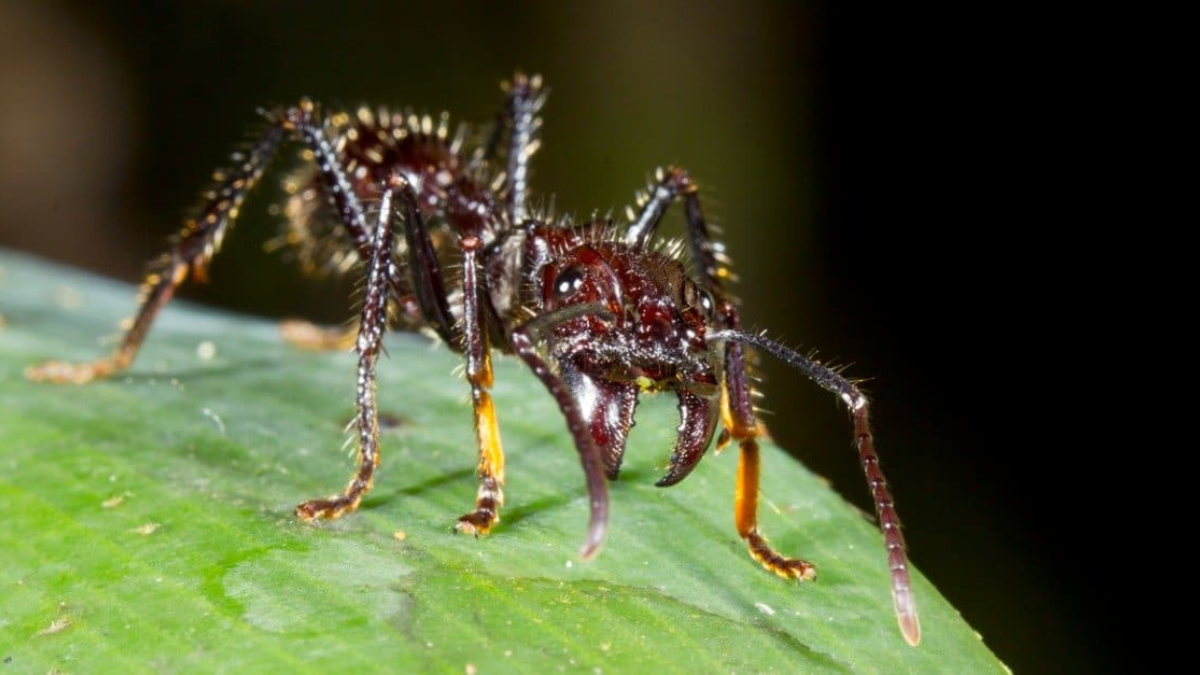Ants, despite their diminutive size, form one of the most diverse and fascinating insect families on Earth. From their complex social structures to their remarkable strength, ants captivate the curiosity of scientists and enthusiasts alike. Among the thousands of ant species, some stand out for their impressive size, defying the stereotype of these insects as mere minuscule creatures. Let’s embark on a journey to explore the top 10 largest ants in the world, showcasing the remarkable diversity and adaptability of these tiny yet mighty organisms.
World’s Largest Ant 2025
Meet the Giant Amazonian ant, reigning as the world’s largest ant species, with an astounding length exceeding 1.5 inches. Found solely in South America, particularly in the Amazon rainforest and coastal regions, these ants boast jet-black females and dark red males. With territorial tendencies, they establish nests in soil, rarely venturing more than 30 feet for food, consuming a varied diet including plants, insects, and spiders. Additionally, the Argentine super colony, stretching 3,730 miles from Spain to Italy, stands as the world’s largest ant colony, a testament to their collective might.
Key Facts Related to the Largest Ant in the World
Here are some of the facts you must know about Giant Amazonian Ant, the largest ant in the world:
- Dinoponera, also known as tocandiras or giant Amazonian ants, belong to the subfamily Ponerinae.
- Found exclusively in South America, Dinoponera species can exceed 3–4 cm (1.2–1.6 in) in length, rivaling the largest ants globally.
- Species like Dinoponera gigantea exhibit remarkable size, distinguished by jet-black females and dark red males.
- Dinoponera colonies are strategically located across South America, from montane rainforests to savannah and lowland rainforests.
- Their colonies typically consist of fewer than 100 individuals, with nest chambers and tunnels reaching depths of 0.10–1.2 m.
- These ants feature a unique reproductive system where some species have a reproductive worker called a gamergate, instead of a specialized queen caste.
- Foraging behavior varies among species, with workers hunting individually for diverse food items, including scavenged invertebrates, seeds, and fruits.
- Despite their size and potent venom, Dinoponera face predation from various vertebrate and invertebrate species, along with threats from entomopathogenic fungi.
- Dinoponera venom possesses numerous proteinaceous components, showing potential for pharmaceutical applications such as pain relief.
- Nesting habits and spatial distribution vary based on habitat, with colonies often found at the base of trees in diverse ecosystems across South America.
Top-10 Biggest Ants in the World By 2025
Giant Amazonian, with the length of upto 16 inches, holds the title of the biggest ant in the world, followed by Bullet Ant, Carpenter Ant, and Dinoponera Quadriceps.
Here is the list of top-10 biggest ants in the world:
| LARGEST ANTS IN THE WORLD 2025 | |||
| Rank | Ant | Length (in inches) | Habitat |
| 1. | Giant Amazonian | Up to 1.6 inches | South America |
| 2. | Bullet Ant | Up to 1.2 inches | Central & South America |
| 3. | Carpenter Ant | Up to 1 inch | Worldwide |
| 4. | Dinoponera Quadriceps | Up to 0.8 inches | Brazil |
| 5. | Banded Sugar Ant | 0.6 inches | Australia |
| 6. | Black Carpenter Ant | 0.48 inches | Canada, Eastern & Central America |
| 7. | Slave-Maker Ant | 0.4 inches | Worldwide |
| 8. | Southern Wood Ant | 0.35 inches | UK, North America |
| 9. | Green Ant | 0.28 inches | Australia, New Zealand |
| 10. | Formica Fusca | 0.28 inches | Europe, Asia, Africa |
World’s Largest Ant – Giant Amazonian
Length: 0.16 inches
Habitat: South America
The largest ant globally, the Giant Amazonian, exceeds 1.5 inches in length, reaching an impressive 1.6 inches. Found solely in South America, these ants dwell in rainforests and coastal areas. Jet black females and dark red males exhibit territorial behavior. They nest in soil and forage within 30 feet, consuming plants, insects, spiders, snails, and crickets.
Second Largest Ant in the World – Bullet Ant
Length: up to 1.2 inches
Habitat: Central & South America
The Bullet ant, often reaching 1.2 inches, ranks among the largest ants globally. Native to Central and South American rainforests, they nest at tree bases. Their reddish-black hue matches their potent sting, likened to being shot, owing to poneratoxin, causing paralysis. They are key predators of the glasswing butterfly.
Third Biggest Ant in the World – Carpenter Ant
Length: up to 1 inch
Habitat: Worldwide
Carpenter ants, like Camponotus ligniperda, are among the world’s largest ants, often reaching one inch in length. Renowned for nesting in wood, they can compromise structures, including houses. With a penchant for aggression, they fiercely defend nests, even targeting worker ants from other species, posing significant challenges for pest control.



 What was the Old Name of Bihar? Know Abo...
What was the Old Name of Bihar? Know Abo...
 Which River is known as the Diamond Rive...
Which River is known as the Diamond Rive...
 Which Dry Fruits are known as the King o...
Which Dry Fruits are known as the King o...







